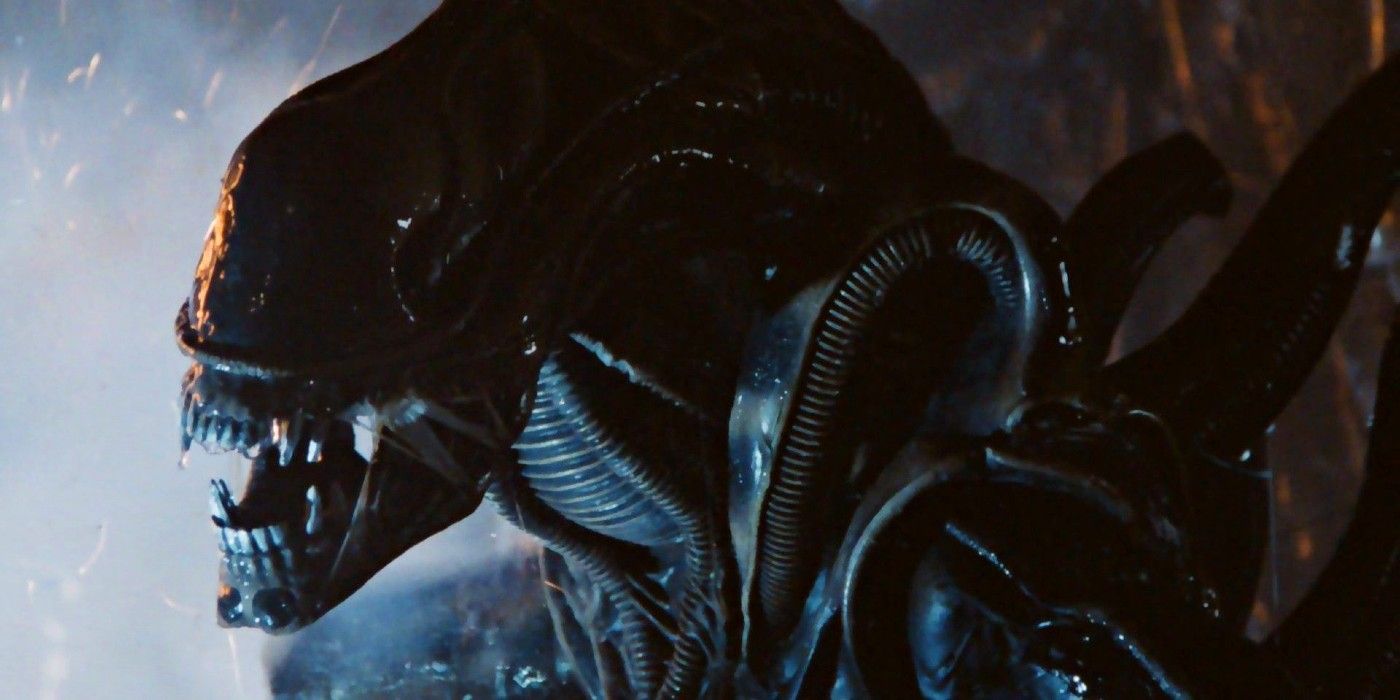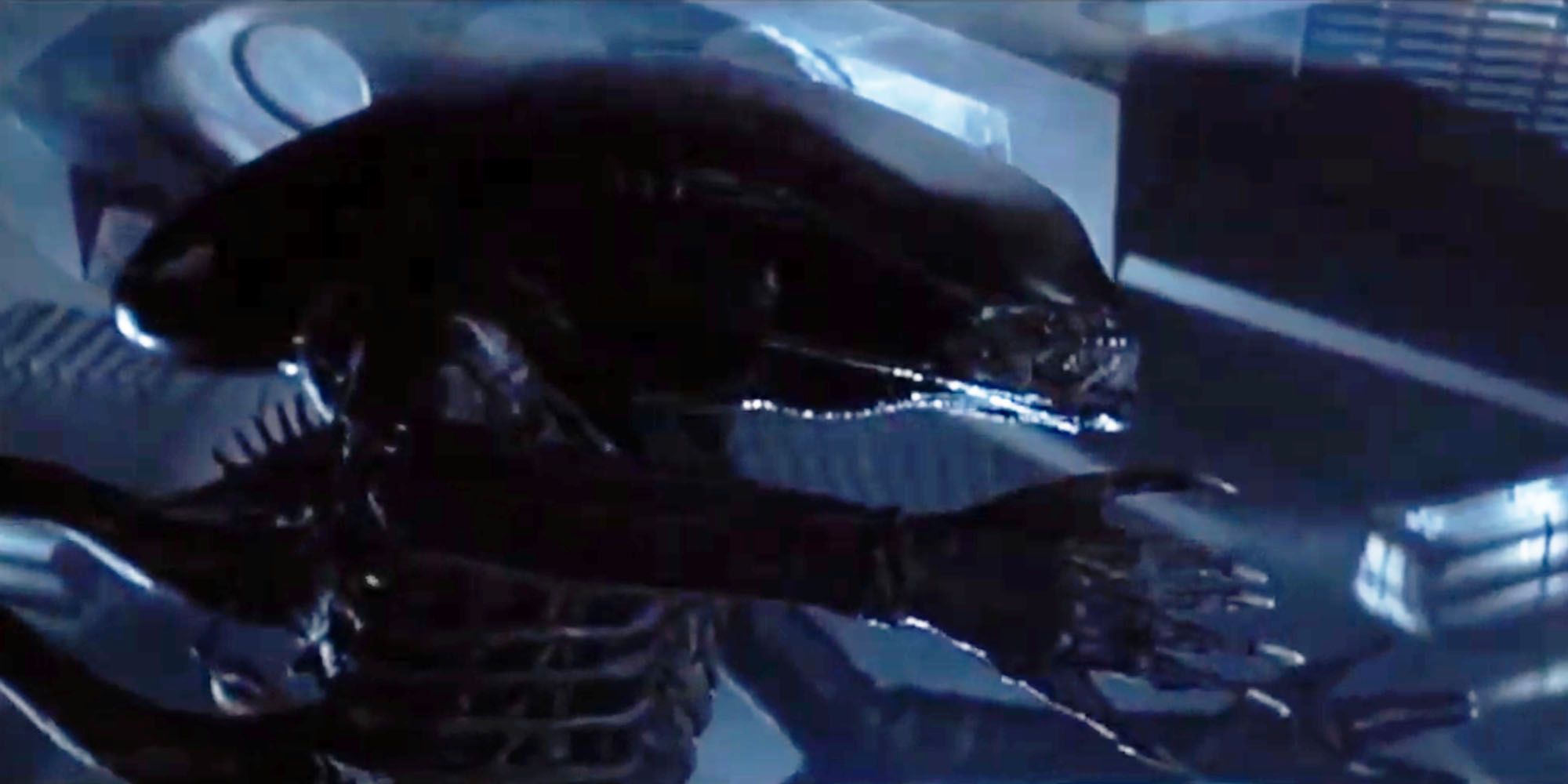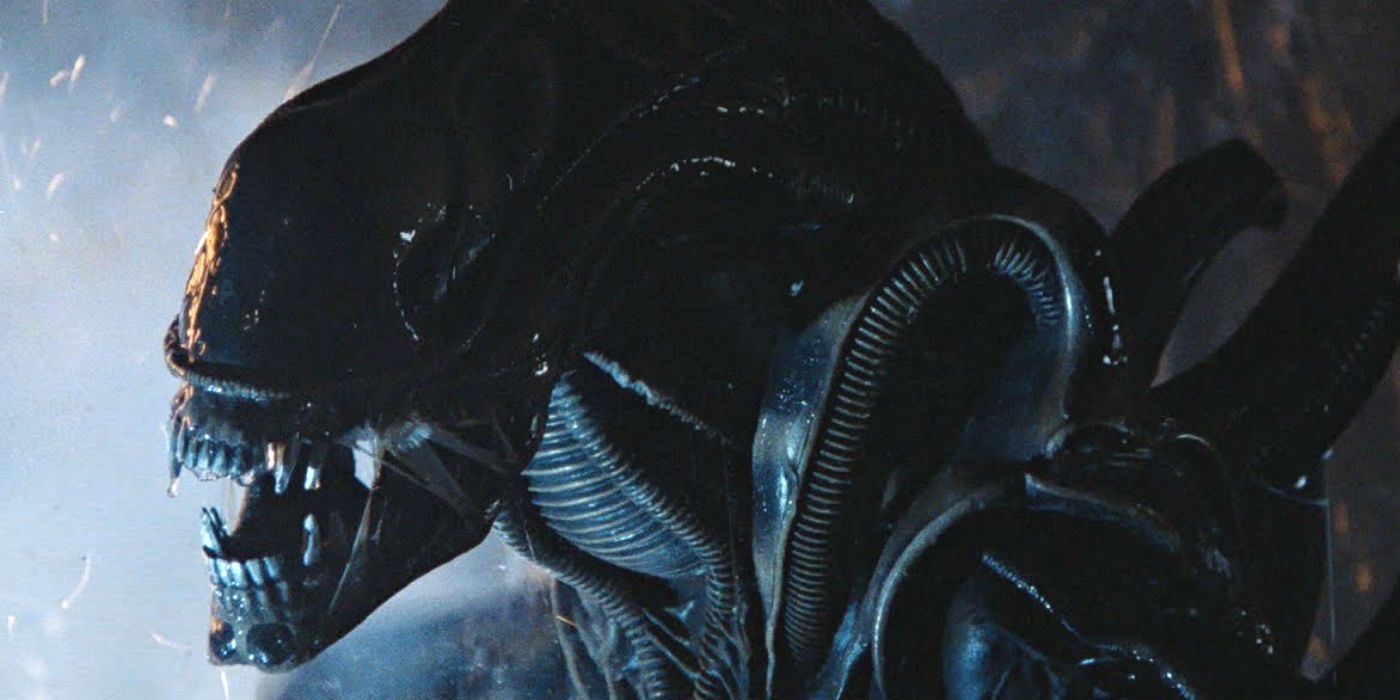Ridley Scott's 1979 deep space monster movie Alien opened audiences up to an entirely new world, a world composed of industrial spacecraft, deceptive AI, and a ferocious species of parasitic, corrosive aliens. In order to create a novel cinematic experience for audiences, Scott oversaw an intense and expensive world building – one that ultimately paid off in theatres.
The success of Alien spawned an entire franchise: three sequels, two prequels, and three crossovers with the Predator franchise. One of the creative minds involved with the original film's set and creature design was Swiss artist H.R. Giger. Without Giger's unique artistic vision, Alien would not be the film it is. Giger's work on the film set the tone for every subsequent Alien feature.
Screenwriter Dan O'Bannon Introduced Ridley Scott To Giger's Work
The screenplay for Alien went through many edits and many writers, but Dan O'Bannon was awarded sole screenwriting credits for the film. From the beginning, O'Bannon was inspired by the grotesque and macabre art of H.R. Giger while writing the script. Once the film was in development, O'Bannon suggested Giger to help design the alien world and the alien creatures.
O'Bannon later summed it up in an interview: "[Giger's] paintings had a profound effect on me. I had never seen anything that was quite as horrible and at the same time as beautiful as his work. And so I ended up writing a script about a Giger monster."
20th Century Fox Found Giger's Vision Too Horrific
Alien was initially pitched to 20th Century Fox as Jaws in space. When Scott and O'Bannon informed the production company H.R. Giger would be involved with the film's design, 20th Century Fox believed audiences would be put off by Giger's macabre and disturbing contributions.
Fortunately, the film crew won. Giger was officially on board to develop the surface of the planetoid the Nostromo crew visits, as well as the derelict vessel and every alien form – from egg to adult.
Giger's First Creature Design Was The Facehugger
Giger envisioned creatures and an alien universe that look biomechanical and organically evolved. With his first contribution, the young alien facehugger, Giger achieved just this.
After working through multiple models, Giger decided upon a small alien with human-like fingers and a proboscis-like tail, which it wraps around its victim's neck. The facehugger used in the film, made out of sheep intestines, was modified by O'Bannon.
The Chestburster Was Inspired By A Francis Bacon Painting
The inspiration for the next stage of the alien's development, called the chestburster, came from a painting by Irish abstract artist Francis Bacon: Three Studies for Figures at the Base of a Crucifixion. The painting features a distorted, plucked chicken that informed the look of the creature.
While Giger's design was refined, the chestburster remains true to its source material. When filming the scene where the alien erupts out of Kane's chest, the cast was unaware high-pressure pumps were set to spray fake blood in all directions. The reactions caught on camera are genuine.
Giger Completed Several Paintings Of The Adult Alien Before Constructing It
Giger's final adult alien form was sculpted out of plasticine, a putty-like material. Scott intentionally chose not to reveal the creature in full until the end of the movie. This choice builds tension by keeping audiences confused about the exact nature of the creature.
Real actors animate the shape created by Giger. For most of the movie, the towering Bolaji Badejo, after being placed in a fitted latex suit, portrays the adult alien. Badejo practiced miming in order to perfect the movements of the monster.
Giger's Adult Alien Incorporates Real Animal Parts And Machinery
In order to create a biomechanical alien, Giger incorporated materials from both living creatures and inanimate objects into his design. This includes snake vertebrae and tubing from an old Rolls-Royce car.
The alien's iconic head was built by Carlo Rambaldi, who followed Giger's sketches closely. Like Giger, Rambaldi included organic materials into his alien head, such as parts of a human skull. To animate the alien's head, Rambaldi created an intricate system of hinges and cables.
The Derelict Spacecraft Was Also Designed By Giger
The design of the derelict spacecraft was based on Giger's vision for the vessel. A crew of over 200 people brought Giger's set designs to life. Assistant art director Les Dilley made molds and casts that were then scaled up.
For the interior of the derelict spacecraft, Giger used dried bones with plaster. As for the surface of the planetoid where the Nostromo crew finds the derelict: sand, fiberglass, and rocks were shipped in to create a desert-like environment.
Giger Worked Alongside Fellow Artists Ron Cobb And Chris Foss
Thanks to O'Bannon, artists Ron Cobb and Chris Foss were brought on board to create the human aspects of the movie, like the ship Nostromo. The pair created hundreds of conceptual drawings and designs that were later used in the movie.
In order to contrast with Giger's vision for the alien world, Cobb and Foss emphasized the cold, austere trajectory of humanity's survival in deep space with their sets. The Nostromo and the escape shuttle Narcissus were both inspired by warships.
Roger Christian, Not Giger, Is Credited As Art Designer For The Film
While H.R. Giger's lasting influence on Alien's legacy is undeniable, the artist is just one of the hundreds of people who brought Dan O'Bannon's script to life. When it comes to the film's art direction, Roger Christian is credited as helming that aspect of the production.
Christian previously worked on Star Wars, and he employed tricks he learned while working on George Lucas's epic. For instance, Christian used scrap metal for sets and props in order to save money.
Some Of Giger's Ideas Were Scaled Back Due To Budget Issues
Giger's ambitious vision for the interior of the derelict ship included the design of a control chamber where the Nostromo crew stumbles upon the remains of an alien. Nicknamed the "space jockey", the costly set used for just one scene was rejected by 20th Century Fox.
Ridley Scott refused to cut the scene he saw it as the key to impressing audiences. Instead, only one wall of the set was built, and Giger airbrushed all of it by hand.











